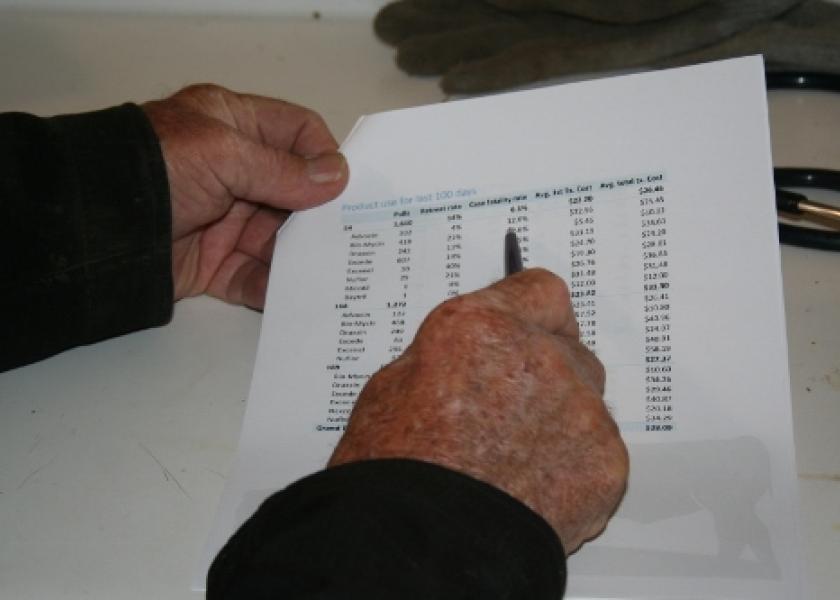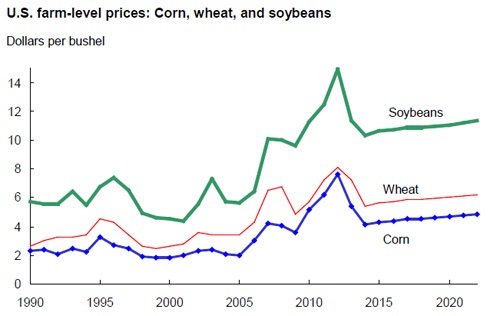Journal of Dairy Science Endorses Trial-Reporting Guidelines

If you plan to submit results of controlled trials to the Journal of Dairy Science, you’ll want to learn about REFLECT, a process developed by Iowa State University researchers to help authors improve the reporting of livestock trials. The peer-reviewed journal recently endorsed the REFLECT system, which stands for Reporting Guidelines for Randomized Controlled Trials for Livestock and Food Safety.
REFLECT, according to ISU, is an evidence-based minimum set of items for trials reporting production, health, and food-safety outcomes.
The process, REFLECT, consists of a checklist of 22 items for authors to use to improve the reporting of livestock trials and challenge studies with production, health, or food-safety outcomes.
Veterinary epidemiologist Annette O’Connor, helped develop the REFLECT process. “The endorsement by the Journal of Dairy Science is great news,” she says. “Endorsement by the world’s leading dairy research journal will advance the use of the process and have a significant impact on animal health and food-safety research by increasing research reproducibility and reducing research wastage.”
The reporting guidelines can be found at the MERIDIAN website, housed by ISU-CVM, which is a clearing house for reporting guidelines for animal studies.
Following is the 22-point checklist of REFLECT reporting guidelines.
|
|
Checklist for REFLECT statement: Reporting guidelines For randomized control trials in livestock and food safety. Bold text are modifications from the CONSORT statement description (Altman DG et al . Ann Intern Med 2001; 134(8):663-694).
|
||
|
Paper section |
Item |
Descriptor of REFLECT statement item |
|
|
Title & Abstract |
1 |
How study units were allocated to interventions ( eg, "random allocation," "randomized," or "randomly assigned"). Clearly state whether the outcome was the result of natural exposure or was the result of a deliberate agent challenge. |
|
|
Introduction |
2 |
Scientific background and explanation of rationale. |
|
|
Methods |
3 |
Eligibility criteria for owner/managers and study units at each level of the organizational structure, and the settings and locations where the data were collected. |
|
|
Interventions |
4 |
Precise details of the interventions intended for each group, the level at which the intervention was allocated, and how and when interventions were actually administered. |
|
|
|
4b |
Precise details of the agent and the challenge model, if a challenge study design was used. |
|
|
Objectives |
5 |
Specific objectives and hypotheses. Clearly state primary and secondary objectives (if applicable). |
|
|
Outcomes |
6 |
Clearly defined primary and secondary outcome measures and the levels at which they were measured, and, when applicable, any methods used to enhance the quality of measurements (eg, multiple observations, training of assessors). |
|
|
Sample size |
7 |
How sample size was determined and, when applicable, explanation of any interim analyses and stopping rules. Sample-size considerations should include sample-size determinations at each level of the organizational structure and the assumptions used to account for any non-independence among groups or individuals within a group. |
|
|
Randomization --Sequence generation |
8 |
Method used to generate the random allocation sequence at the relevant level of the organizational structure, including details of any restrictions (eg, blocking, stratification) |
|
|
Randomization --Allocation concealment |
9 |
Method used to implement the random allocation sequence at the relevant level of the organizational structure, (eg, numbered containers or central telephone), clarifying whether the sequence was concealed until interventions were assigned. |
|
|
|
|
||
|
Randomization --Implementation |
10 |
Who generated the allocation sequence, who enrolled study units, and who assigned study units to their groups at the relevant level of the organizational structure. |
|
|
Blinding (masking) |
11 |
Whether or not participants those administering the interventions, caregivers and those assessing the outcomes were blinded to group assignment. If done, how the success of blinding was evaluated. Provide justification for not using blinding if it was not used. |
|
|
Statistical methods |
12 |
Statistical methods used to compare groups for all outcome(s); Clearly state the level of statistical analysis and methods used to account for the organizational structure, where applicable; methods for additional analyses, such as subgroup analyses and adjusted analyses. |
|
|
Results Study flow
|
13 |
Flow of study units through each stage for each level of the organization structure of the study (a diagram is strongly recommended). Specifically, for each group, report the numbers of study units randomly assigned, receiving intended treatment, completing the study protocol, and analyzed for the primary outcome. Describe protocol deviations from study as planned, together with reasons. |
|
|
Recruitment |
14 |
Dates defining the periods of recruitment and follow-up. |
|
|
Baseline data |
15 |
Baseline demographic and clinical characteristics of each group, explicitly providing information for each relevant level of the organizational structure. Data should be reported in such a way that secondary analysis, such as risk assessment, is possible. |
|
|
Numbers analyzed |
16 |
Number of study units (denominator) in each group included in each analysis and whether the analysis was by "intention-to-treat." State the results in absolute numbers when feasible (eg, 10/20, not 50%). |
|
|
Outcomes and estimation |
17 |
For each primary and secondary outcome, a summary of results for each group, accounting for each relevant level of the organizational structure, and the estimated effect size and its precision (e.g., 95% confidence interval) |
|
|
Ancillary analyses |
18 |
Address multiplicity by reporting any other analyses performed, including subgroup analyses and adjusted analyses, indicating those pre-specified and those exploratory. |
|
|
Adverse events |
19 |
All important adverse events or side effects in each intervention group. |
|
|
Discussion |
20 |
Interpretation of the results, taking into account study hypotheses, sources of potential bias or imprecision, and the dangers associated with multiplicity of analyses and outcomes. Where relevant, a discussion of herd immunity should be included. If applicable, a discussion of the relevance of the disease challenge should be included. |
|
|
Generalizability |
21 |
Generalizability (external validity) of the trial findings. |
|
|
Overall evidence |
22 |
General interpretation of the results in the context of current evidence. |
|
For more on research methods, see these articles from BovineVetOnline:
13 Ways to Tell Good Research from Bad








